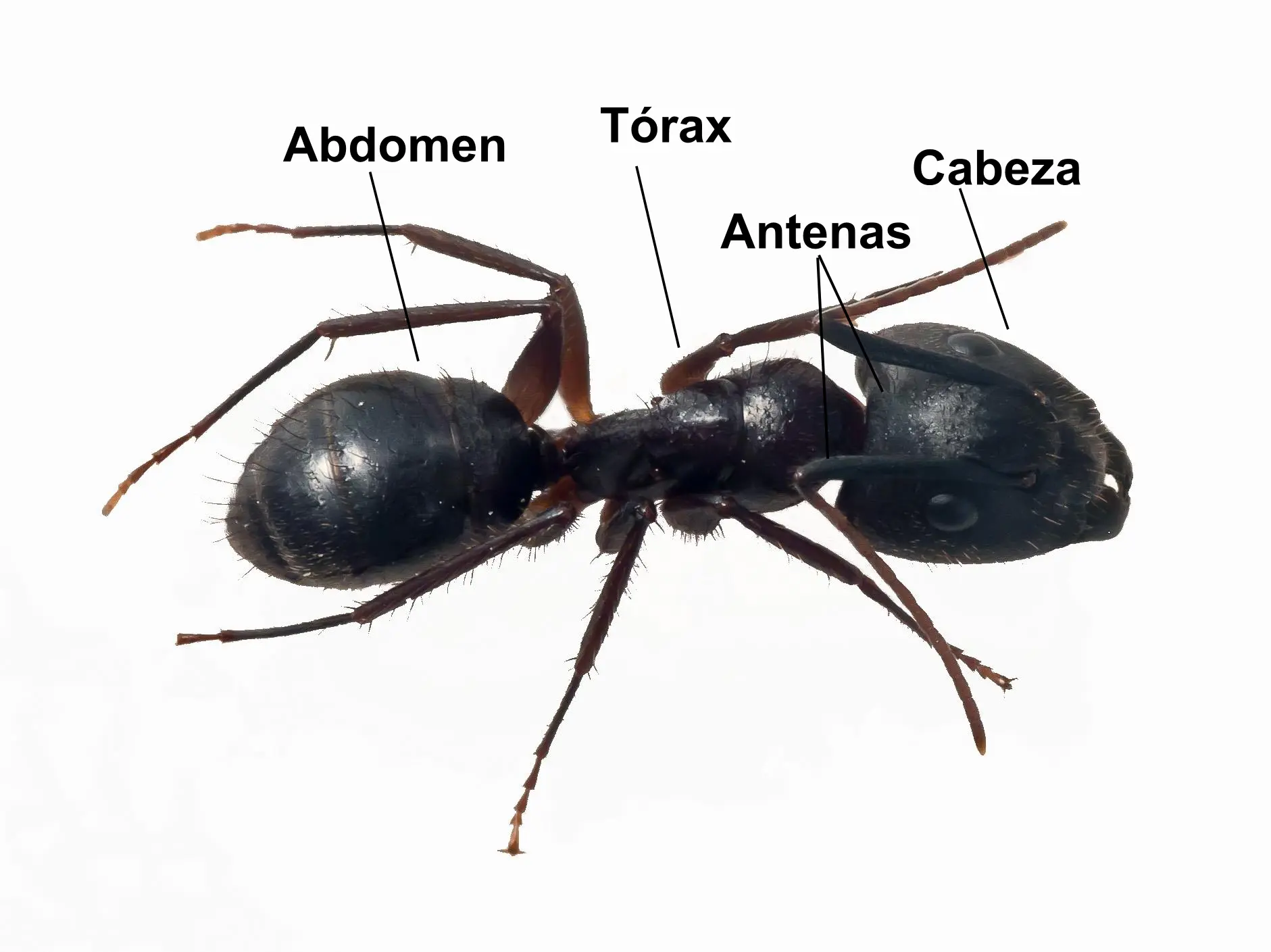Basic Ant Anatomy Explained: A Simple Beginner's Guide
Understanding ant anatomy helps in identifying different species and appreciating how these insects function. Ants, like all insects, have a body divided into three main segments: the head, the thorax, and the gaster. These distinct ant body segments make up the entire ant structure, protected by a tough outer shell called the ant exoskeleton.
 Anatomy of a worker ant
Anatomy of a worker ant
Knowing the basic ant anatomy is key whether you’re into ant keeping basics or just curious about these tiny creatures. We’ll break down the main parts of an ant simply, providing a beginner ant anatomy guide that explains the different parts of an ant.
The Ant Head
The ant head parts contain most of the sensory organs and the mouthparts used for feeding and manipulating objects. Prominently, ants have a pair of elbowed antennae, which are crucial for communication and sensing the environment; understanding ant antennae function reveals how they navigate, find food, and recognize colony mates. Below the antennae are the mandibles, powerful jaws used for cutting, carrying things, digging, and defense; knowing about ant mandibles explained clearly shows their versatility.
The Thorax
The thorax is the middle section of the ant’s body, essentially its motor section. It’s the anchor point for the legs and, in winged ants, the wings. A key part of simple ant anatomy is understanding how many legs do ants have: all ants, like other insects, have six legs attached to the thorax, three on each side. The muscles powering movement are located here.
The Gaster or Abdomen
The third main body part is the gaster, often incorrectly called the abdomen by beginners, though technically the gaster is the bulbous posterior part following the small connecting segment (petiole). The ant abdomen parts or specifically the gaster explained its functions in housing digestive organs, reproductive organs in queens and males, and often a stinger in many species. This section is usually the largest and most variable in size and shape depending on the ant’s role in the colony, making understanding ant bodies important for ant identification parts.
Learning ant anatomy provides insight into the basic ant biology basics. It gives a solid foundation for ant anatomy for beginners, offering easy ant anatomy to grasp the overall ant morphology for beginners and useful ant anatomy terminology. For hobbyists, especially concerning worker ant anatomy, this guide to ant parts covers what are ants made of at the most fundamental level.